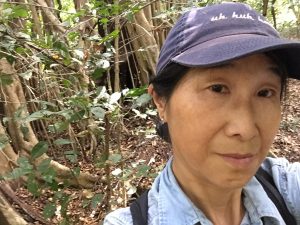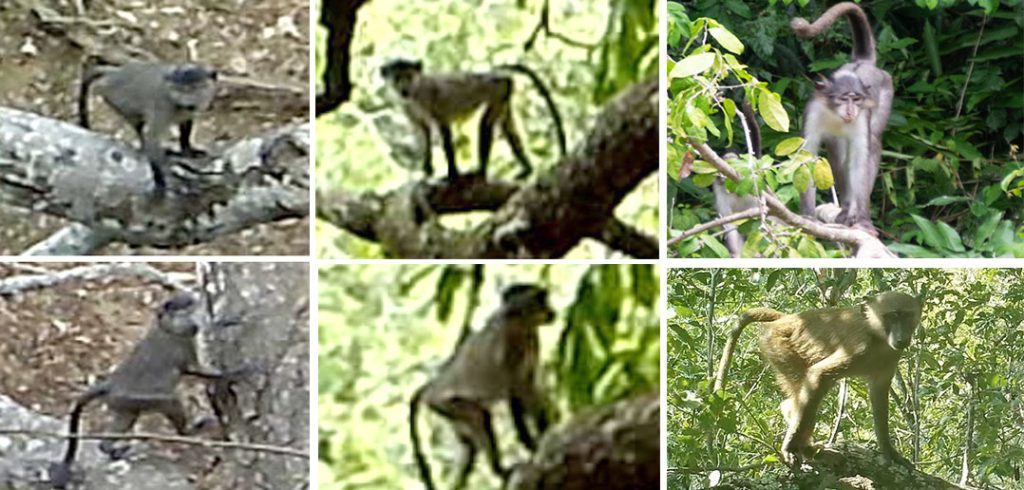But three years ago, during a visit to Côte d’Ivoire’s Comoé National Park, Matsuda Goodwin, a primate conservationist and adjunct professor of anthropology at Fordham, discovered what she is almost certain is the first sighting in the wild of a monkey that is a descendent of both a mangabey and a baboon. This summer, she’ll continue her study of the hybrid “Mangaboons,” with an eye toward saving them.
One sighting is not enough to make a case for a new kind of monkey. But two more sightings by Matsuda Goodwin last year, which were documented via photo and video, convinced her that at least one hybrid monkey is living in the 4,400-square-mile park, which is a UNESCO World Heritage Site.
In April, she published her most recent findings on all the sightings in the paper “Putative white-naped mangabey (Cercocebus lunulatus) × olive baboon (Papio anubis) hybrids from Comoé National Park in Côte d’Ivoire.” She is the lead author of the paper, which appeared in the journal Folia Primatologica.

Since the white-naped mangabey is critically endangered, the presence of a hybrid of it adds a wrinkle to the effort to preserve it, Goodwin said.
“It challenges conservation practitioners. There are no countries in the world that say a hybrid has to be protected. Hybrids have a unique genome, and from my point of view, I think they deserve protection,” said Goodwin.
“But we can’t put them on the endangered species list, because they don’t really fit in. People might say they’re not pure, so they don’t need to be protected.”
Matsuda Goodwin still needs to conduct a genetic analysis of the monkeys’ scat, or feces, before making a definitive conclusion and will be teaming up with a geneticist from NYU to test samples that she is searching for this summer. Until then, she is referring to it as “putative,” as it is only presumed to be a hybrid. But evidence from four photos that she took in June and video taken from remote canopy cameras in January and May 2021 makes a strong case for the hybrid theory.
The putative hybrid’s nose and muzzle resembles that of a baboon, but its forehead is dark like a mangabey, she said. The dark tips of its ears are reminiscent of a baboon, but the reddish color of its chest is more like a mangabey.
“The face is so unique. It doesn’t look like a baboon or a mangabey. It’s very peculiar,” she said.
In the videos, the putative hybrid, which may be the same one from 2019 or may be a different one, also exhibited behaviors that lend credence to the hybrid hypothesis. Its tail droops downward like a baboon, not up in an arc over its back like a mangabey. It is also seemingly less agile than a mangabey.
Mangabey baboon hybrids are not unprecedented, as they have been born in captivity. When they are born in the wild though, it can either be the result of random mating of species, which is known as a stochastic phenomenon, or it can be a sign of an ecosystem under stress. Baboons, for instance, are plentiful in other parts of Africa, but in the Comoé National Park, their numbers are worrisome.
“We need to obtain a lot more data to say that that locally, a species is endangered, but something may be going on with the baboon population situation, and something really strange may be going on with the mangabey population,” she said
“If there are enough mates of the same species, why would one mate with a different species? From a conservation point of view, it’s important to study them.”


